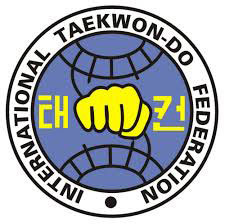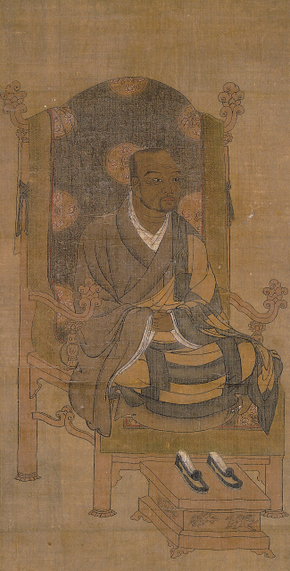Taekwondo 태권도Taekwondo Preschool
When you reach senior belt you are expected to guide the junior belts when they are beginning Taekwondo such as showing by example. To advance from one rank to the next, students typically complete promotion tests in which they demonstrate their proficiency in the various aspects of the art before a panel of judges or their teacher. View Taekwondo belt levels »

Wonhyo 원효
The names of these patterns typically refer either to events in Korean history or to important people in Korean history. Elements of the patterns may also be historical references, such as the number of moves, the diagram, the way the pattern ends, and so on.
Wonhyo (617–686 CE) was one of the leading thinkers, writers and commentators of the Korean Buddhist tradition. Essence-Function (體用), a key concept in East Asian Buddhism and particularly that of Korean Buddhism, was refined in the syncretic philosophy and worldview of Wonhyo.

As one of the most eminent scholar-monks in Korean history, he was an influential figure in the development of the East Asian Buddhist intellectual and commentarial tradition. His extensive literary output runs to over 80 works in 240 fascicles, and some of his commentaries, such as those on the Nirvāṇa Sūtra and the Awakening of Faith ( Mahāyāna-śraddhotpāda Śāstra), became classics revered throughout China and Japan as well as Korea. In fact, his commentary on the Awakening of Faith helped to make it one of the most influential and intensively studied texts in the East Asian Mahāyāna tradition. Chinese masters who were heavily influenced by Wonhyo include Fazang, Li Tongxuan, and Chengguan. The Japanese monks Gyonen of the Pure Land Buddhism and Zenshu and Joto of the Faziang school were also influenced by him.
With his life spanning the end of the Three Kingdoms period and the beginning of the Unified Silla, Wonhyo played a vital role in the reception and assimilation of the broad range of doctrinal Buddhist streams that flowed into the Korean peninsula at the time. Wonhyo was most interested in, and affected by Tathāgatagarbha, Yogācāra and Hwaom thought. However, in his extensive scholarly works, composed as commentaries and essays, he embraced the whole spectrum of the Buddhist teachings which were received in Korea, including such schools as Pure Land, Nirvana, Sanlun and Tiantai (Lotus Sūtra school).
Biography
Wonhyo was born in Apnyang (押梁), nowadays the city of Gyeongsan, North Gyeongsang province, South Korea. He had a son, Seol Chong, who is considered to be one of the great Confucian scholars of Silla.
Wonhyo was famous for singing and dancing in the streets. While the Buddha discouraged such behaviors, his songs and dances were seen as upaya, or skillful means, meant to help save all sentient beings.
Keel (2004: p. 432), in mentioning bodhisattva and sentient beings, holds that Wŏnhyo:
...tried to embody in his own life the ideal of a bodhisattva who works for the well-being of all sentient beings. Transcending the distinction of the sacred and the secular, he married a widower princess, visited villages and towns, and taught people with songs and dances
He is thought to have founded Korea's lone riverside temple, Silleuksa, in the late 600s. While Wonhyo was in Bunhwangsa temple located in Guhwang-dong, Gyeongju, he wrote a number of books. For such strong association with Wonhyo, a research center and a shrine named Bogwangjeon hall dedicated to Wonhyo's legacy are located in Bunhwangsa.
Contribution to commentarial tradition
He wrote commentaries on virtually all of the most influential Mahāyāna scriptures, altogether including over eighty works in over two hundred fascicles. Among his most influential works were the commentaries he wrote on the Awakening of Faith, Nirvana Sutra and Vajrasamādhi Sutra, along with his exposition on the meaning of the two hindrances, the ijangui. These were treated with utmost respect by leading Buddhist scholars in China and Japan, and served to help in placing the Awakening of Faith as the most influential text in the Korean tradition.
Keel positions Wŏnhyo in the emergent context of flux:
"Wŏnhyo, commonly regarded as the greatest thinker in Korean Buddhism, was a prolific writer who produced no less than eighty-six works, of which twenty-three are extant either completely or partially. By his time, most of the important sūtras and treatises had flowed into Korea from China, and they were causing a great deal of confusion for Silla Buddhists, as they had for the Chinese. It was Wŏnhyo's genius to interpret all of the texts known to him in a way that would reveal their underlying unity of truth without sacrificing the distinctive message of each text. He found his hermeneutical key in the famous Mahāyāna text, the Awakening of Faith (Dasheng Qixin Lun)".
Teaching Story
Wonhyo spent the earlier part of his career as a monk. In 661 he and a close friend - Uisang (625–702, founder of the Korean Hwaom school) - were traveling to China where they hoped to study Buddhism further. Somewhere in the region of Baekje the pair were caught in a heavy downpour and forced to take shelter in what they believed to be an earthen sanctuary. During the night Wonhyo was overcome with thirst, and reaching out grasped what he perceived to be a gourd, and drinking from it was refreshed with a draught of cool, refreshing water. Upon waking the next morning, however, the companions discovered much to their amazement that their shelter was in fact an ancient tomb littered with human skulls, and the vessel from which Wonhyo had drunk was a human skull full of brackish water. Upon seeing this, Wonhyo vomited. Startled by the experience of believing that a gruesome liquid was a refreshing treat, Wonhyo was astonished at the power of the human mind to transform reality. After this "One Mind" enlightenment experience, he abandoned his plan to go to China. He left the priesthood and turned to the spreading of the Buddhadharma as a layman. Because of this aspect of his character, Wonhyo ended up becoming a popular folk hero in Korea. He was a colleague and friend of the influential Silla Hwaom monk Uisang, and an important result of their combined works was the establishment of Hwaeom as the dominant stream of doctrinal thought on the Korean peninsula.
English Translation Project
Wonhyo's twenty-three extant works are currently in the process of being translated into English as a joint project between Dongguk University and State University of New York at Stony Brook.
Taekwondo Sequence
The International Taekwon-Do Federation pattern "Won-Hyo" is named in Wonhyo's honor. This pattern consists of 28 movements, and is the pattern for the green belt student.
The World Taekwondo (WT) has a Hyeong or pattern named Ilyo for 9th Dan black belt which means the thought of the Buddhist priest of Silla Dynasty, Wonhyo.
Promotion from one dan to the next can take years. The general rule is that a black belt may advance from one rank to the next only after the number of years equivalent to the current rank. For example, a newly promoted third-degree black belt may not be allowed to advance to fourth-degree until three years have passed. View more information on Black Belt Dan ( 단 ) ».
RESOURCES
This article uses material from the Wikipedia article "Wonhyo", which is released under the Creative Commons Attribution-Share-Alike License 3.0.




















